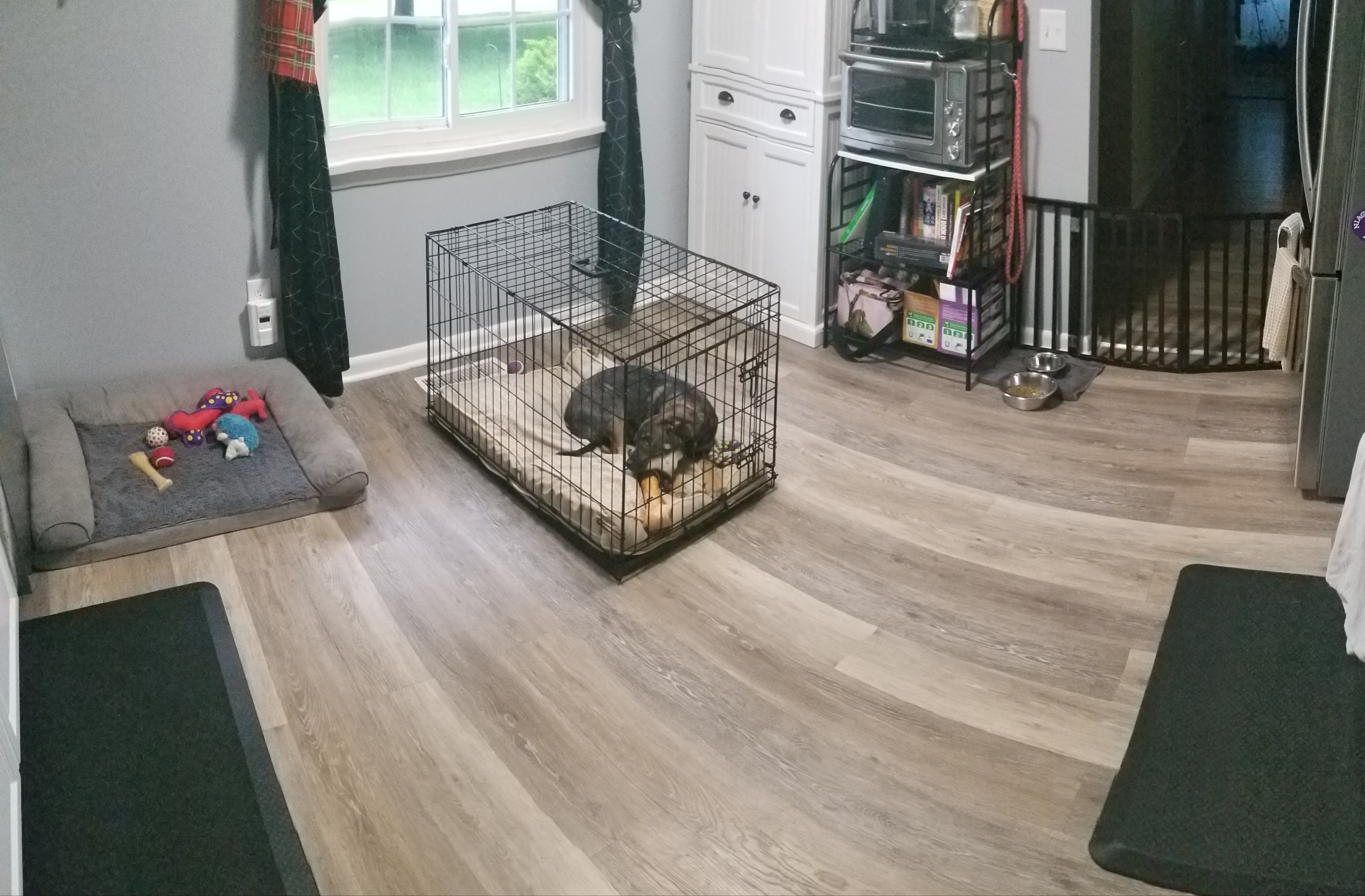
Decompression is the practice of low activity and a strict schedule for a foster dog or newly adopted dog that came from a shelter setting. This can take up to two weeks but it mostly depends on the dog’s personality and temperament. This period of time is extremely crucial for the dog to properly adjust to the new environment, new people, and other animals. Following through with a strict Decompression for foster dogs helps reduce anxiety, fear, and aggression in foster or newly adopted dogs.
I have created a day by day guide on Decompression and what should and should not be done while the foster dog is in the Decompression Period.

Day Zero
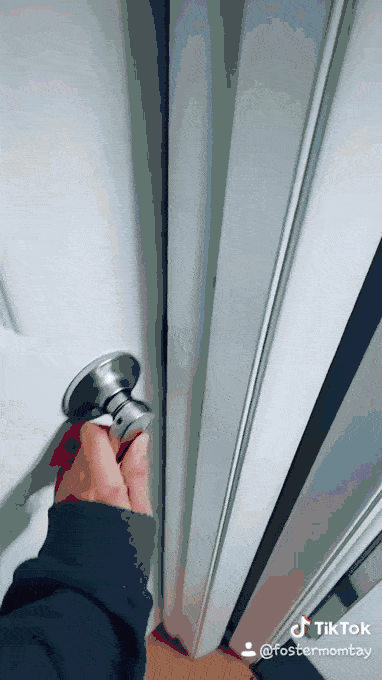
This is going to be your prep day. The day you get all your supplies ready for your foster dog. First thing first, you need to pick your foster’s decompression room. I suggest a spare bedroom, office, or laundry room. This area should have a doorway where you can set up a puppy gate and so that the door can still be closed. It should also be separate from where you keep your resident dogs.
Inside
When you have an area picked out, set up the crate in that room. If you want, you can place towels or old blankets in the crate but they are not necessary. Also set up an area for the water bowl. I would keep all supplies in this area except a bag of dog food. Any open bags of food needs to be stored away from hungry pups.
Second, walk around your house and look for everything and anything that could be a potential safety hazard for a new dog. If there are any exposed electrical cords, tuck them under or behind furniture. Any shoes out need to be put away. If the garbage is out in the kitchen with an easy to open lid, put it in a cupboard or gate off your kitchen. The only toys that are out should be dog toys, so if you have children’s toys get them stored away.
Outside
Lastly, check your yard. If you have a fenced yard, walk around the entire perimeter and make sure there are no spots that a foster dog could potentially squeeze through or dig under. Zip ties or tent ground stakes can be a quick fix if you see a problem area. If you are using a long line, pick out a good spot for that and make sure the corkscrew is secure in the ground. Walk around the main area as well and check for any garbage that may have blown into your yard. Also check for wild mushrooms and get them dug up and thrown out.
Once everything is set up and safe, you are ready to get your foster dog!
Day One, Decompression Begins
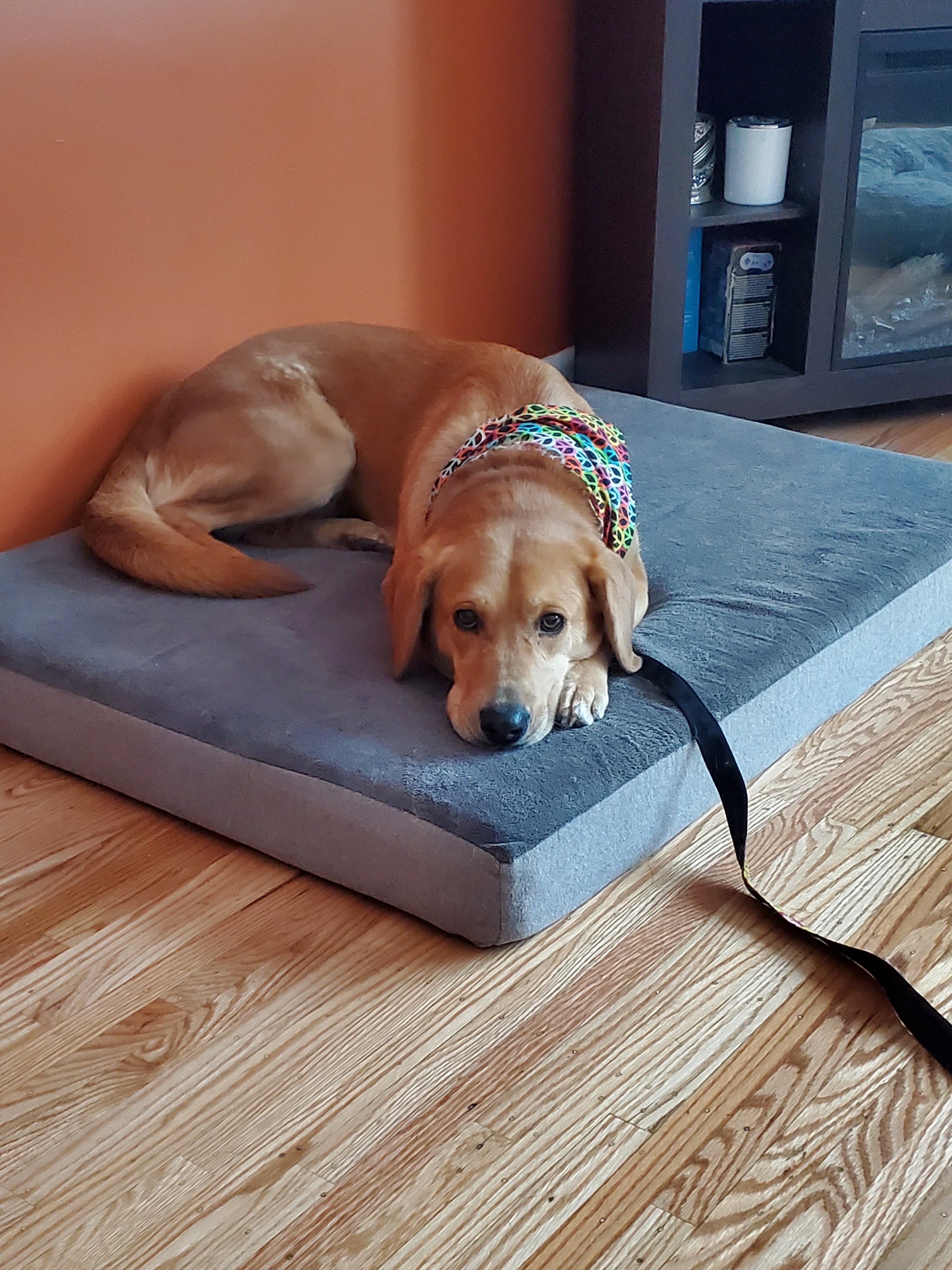
The day you get your foster dog has arrived! Once you get the when and where to get your foster dog, make sure the entire family knows. So everyone is prepared as can be. When you go to leave, your resident dogs (and other animals) should be put away. They should all be in their areas of the house, preferably in their crates. There are even some fosters who send their dogs to day care for the day so everyone adjusts perfectly.
There are important items to have when you go to get your foster dog. Make sure you bring a nice fitting collar and leash with you. Having a collar and leash helps securely get the dog in and out of your vehicle. Either have a crate in your car or towels down. More times than not these dogs are going to be stinky. There is also the potential of an accident in the car. Bring paper towels and cleaning spray.
Coming Home
When you arrive home, walk your foster dog outside in the area of the yard they will use as their bathroom. You are going to do this on their 6 foot leash. Even if you have a fenced yard, do not take them off the leash. Allow them to walk around but keep with them holding the leash. Make sure it is loose and they guide you where they want to go. They should be using the bathroom at this time. I would suggest staying outside with them for about a half hour. Allow them to empty their system, smell around, and relax. You should not take your foster dog on any walks until further into decompression. The only outside time will be you and the foster walking together in the yard.
Coming inside is the same as outside, leave the foster dog on a loose leash and walk with them around the house. Let them sniff and explore the new home. Make sure they get a nice drink of water now. If you see signs that they need to go potty, calmly get them back outside. If they want to relax laying down on the floor or dog bed, stay with them. Sit near them on the floor or have a chair handy to sit on, near them.
The foster dog should be out exploring and relaxing for about four hours before you start crating and rotating. Once you have reached that point, with lots of verbal encouragement, guide them to their foster room and let them explore their new room. When in the foster room, close the puppy gate and drop the leash allowing them to walk around with the leash dragging. Encourage them into their crate and give them a small meal to eat in their crate. Once secured in their crate, you can close the door and puppy gate then let your dogs out.
Settling In
At this point you are going to set a timer for every two hours. When the timer goes off, this is when you crate & rotate the dogs in the house. If all the dogs are utilizing the same rooms during their rotate phase, they can sniff each other’s scents left behind in the air and on the dog beds. This will help later with introductions. You should be utilizing these two hour rotations if you do not have a resident dog as well. Giving the foster dog down time throughout the day will create structure.
The major point of Decompression is to create a stress free environment for the foster dog to settle into the new home. With this, you are NOT going to start any form of intense training. By intense training, this means nothing past learning “sit”, crate training, potty training, or basic manners. Basic manners means that the foster dog sits for meal times (which need to be in the crate), sits for treats, sits before being let outside. This also includes that the foster dog should never be on furniture for any reason. All of these little things help create structure, which the foster dog will need to be successfully adopted.
Day Two to Four

For this block of time, the two hour rotations still need to be utilized. Do not worry, this is not too much time in a crate for your foster dog. The set schedule and structure is very beneficial to the foster dog’s success after adoption. When your foster dog is out and about in the house, keep a leash on them. You do not need to be holding it for these days but want it attached if you need to quickly redirect your foster dog.
For outside time, use the six foot leash and walk with your foster dog while they are using the bathroom. This helps build trust between you and the foster dog, while having a visual of the dog’s stool in case there is diarrhea, worms, or blood. Your foster dog should not be going on walks yet.
There should still be no intense training for these days. You should focus on teaching your foster dog, creating structure through basic manners, crate training, and potty training.
Day Five to Seven
Phase three of Decompression! This phase is going to bring in more freedom for your foster dog. If you feel your foster dog is not ready, do not move on to this phase. Keep with the low key days for a little bit longer. Slow and steady wins the rescue race!
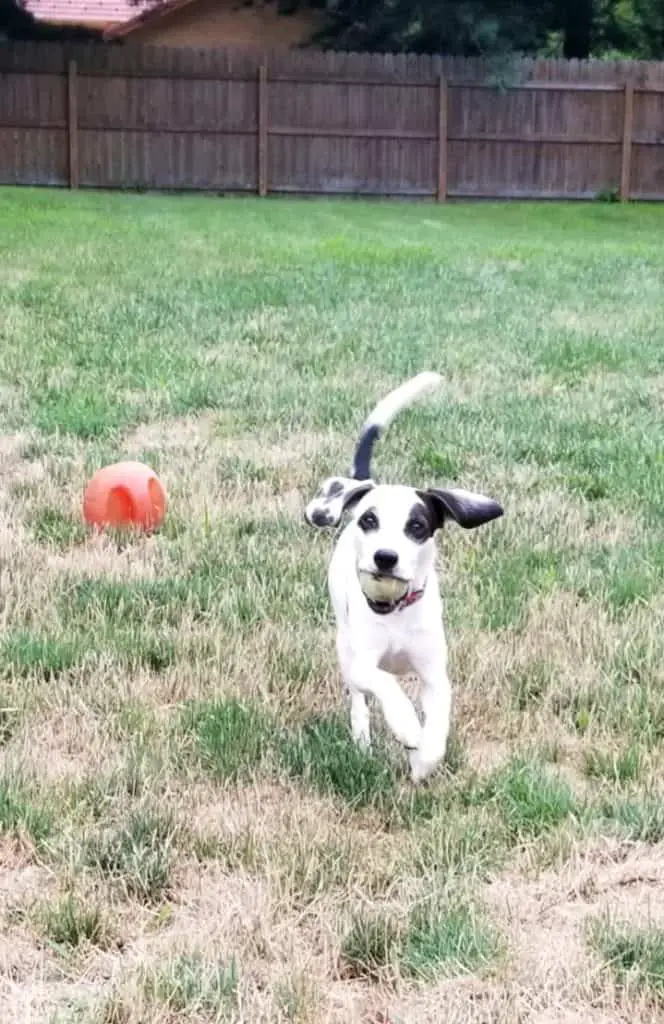
Two hour crate and rotating is still in effect here, but while your foster dog is in their crate, you can leave their door open but keep the puppy gate closed. This way they can see and hear the bustle of the house and your resident dogs while it is their turn out. You do not want anyone barking at the other. So if there is barking inside the crate or at the puppy gate door, redirect your dog or foster dog. Try opening the door every other two hour rotation.
When it comes to outside time, you can now allow your foster dog to adventure around the yard within the fenced area or on a long line. You can also start taking your foster dog on independent walks. If you notice your foster dog is alert barking at people or dogs, stop the walks and ask your rescue for guidance on how they want to handle the situation.
As long as the manners and basic training is going well, feel free to step it up during these days. Try to teach “down”, “stay”, “paw” etc. You can also bathe your foster dog during this period.
Day Eight
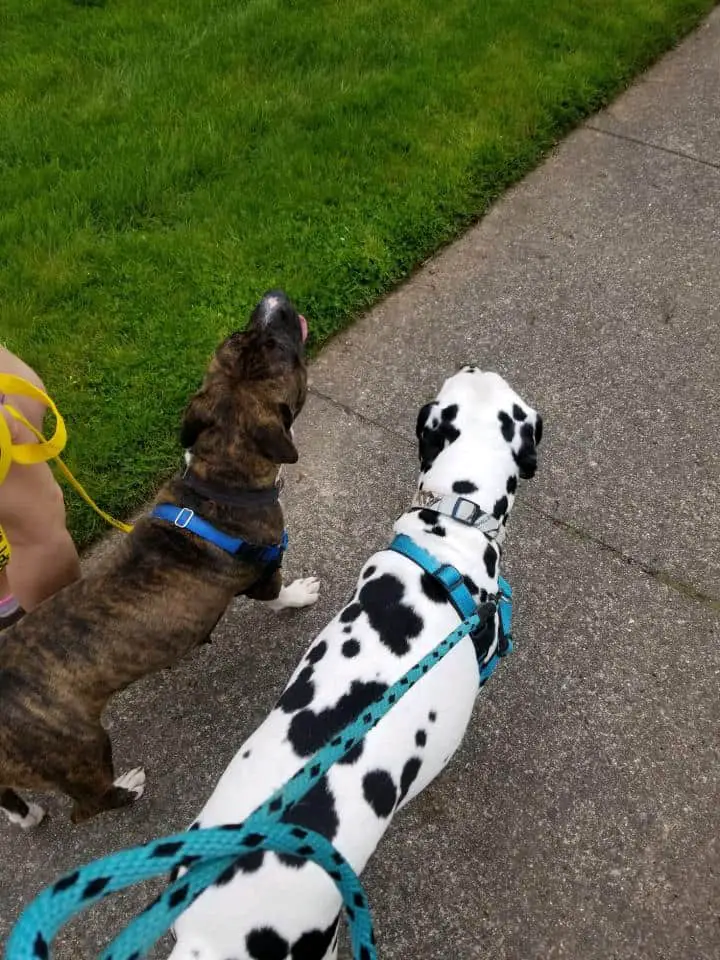
Everything that happened in days five through seven are included here; two hour rotations, relaxed indoor and outdoor time, training as needed. The only difference in day eight is that there is the potential to introduce your resident pets. Always ask your rescue first before introducing your foster dog to your resident animals. Make sure to follow their policies and procedures when you do your introductions.
Before you start your introductions, all toys and bones need to be put away. These items can cause resource guarding or dog fights. Your resident dog does not know the foster dog and visa versa. They may not want to share things with a stranger. The introduction is so they can play together, no need for toys or bones at this time.
Always start with a walk to introduce your resident dogs to foster dogs. Take it slow. Never ever introduce dogs off leash in an open area. As long as the walk went well then they can interact close, but on leash. Have everyone play outside for a little bit first before coming inside. For a step by step guide on how to introduce your foster dog to resident dog, check out Foster Series: A Guide to Introducing Your Foster Dog To Your Resident Dog.
If someone is nervous or over interested, try doing the walk together over the next three days without interaction at the end. This will help build social confidence. Stop all introductions if there is growling, snarling, or stiffness and reach out to your rescue for guidance.
Decompression Comes to a Close, Day Nine to Fourteen (Or Adoption)
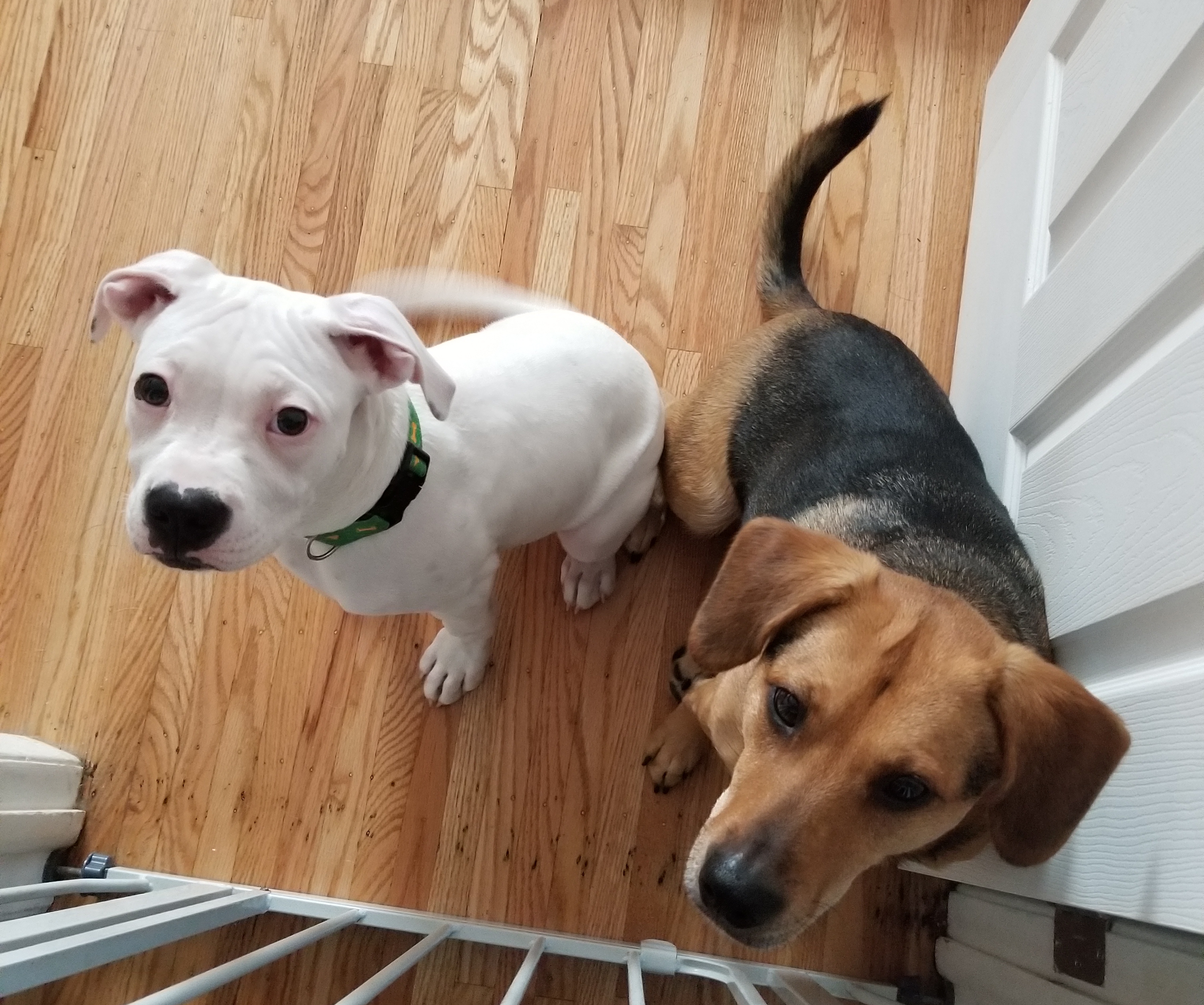
These are the last days of decompression. Maintain all the same aspects of days five through eight. The only big difference is that your dogs have all met by now. So your crate and rotate is going to look a little different. Maintain your timer for every two hours, but this time you will be working in sets of three. First two hours, the foster dog is out. Second two hour block, the resident dogs are out. Third two hour block, both foster dog and resident dogs are out together. This structure helps teach independence to your foster dog so that if they go to a home without other animals, they do not become dependent on a fursibling. This also helps reduce stress in the hierarchy of your pack because they will have time away from a new dog. Make sure that everyone is following proper play behavior!
Take these instructions seriously so that you can set up your foster dog for success. Decompression reduces anxiety, stress, fear issues, and aggression. If you follow these day by day instructions, your foster dog will thrive and be the best adoptable dog possible.